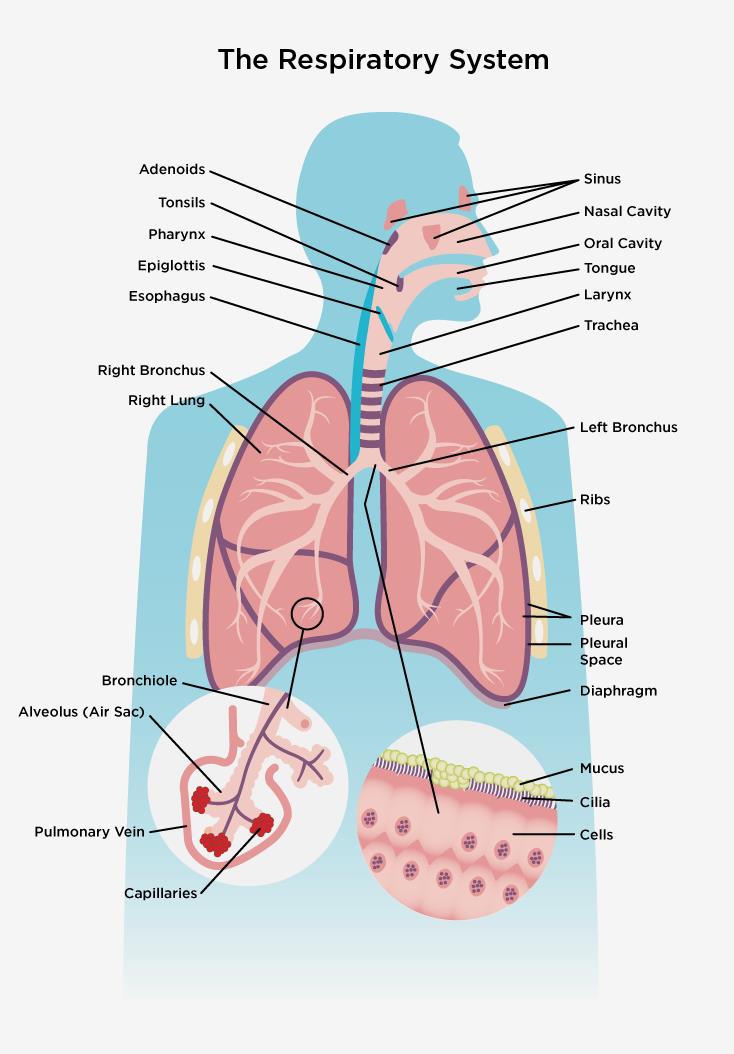Respiratory Case Studies
Respiratory disorders refer to medical conditions that affect the lungs and the airways.

Sources: https://www.lung.ca/lung-health/lung-info/respiratory-system
Common Respiratory Diseases
- Asthma
- Chronic obstructive pulmonary disease (COPD)
- Pneumonia
- Tuberculosis (TB)
- Lung cancer
- Pulmonary embolism
- Pulmonary fibrosis
- Bronchitis
- Sleep apnea
- Allergies
Symptoms and Signs
- Coughing,
- Wheezing,
- Shortness of breath,
- Chest pain,
- Fever, Chills,
- Fatigue.
Diagnostic Investigation
Tests for respiratory disorders may include imaging studies such as chest X-rays, CT scans, and MRI, as well as pulmonary function tests, bronchoscopy, and sputum analysis.
Treatment
Options for respiratory disorders may include medications, oxygen therapy, pulmonary rehabilitation, and surgery. Examples of treatment modalities for specific conditions include:
- Asthma: inhaled corticosteroids, bronchodilators, leukotriene modifiers, immunomodulators
- COPD: bronchodilators, inhaled corticosteroids, oxygen therapy, pulmonary rehabilitation
- Pneumonia: antibiotics, antivirals, oxygen therapy, supportive care
- Tuberculosis: antibiotics, directly observed therapy (DOT)
- Lung cancer: surgery, radiation therapy, chemotherapy, targeted therapy, immunotherapy
- Pulmonary embolism: anticoagulants, thrombolytics, oxygen therapy
- Pulmonary fibrosis: corticosteroids, immunosuppressants, oxygen therapy
- Bronchitis: bronchodilators, expectorants, cough suppressants
- Sleep apnea: continuous positive airway pressure (CPAP), bilevel positive airway pressure (BiPAP), oral appliances
- Allergies: antihistamines, decongestants, immunotherapy
Treatment plans are individualized based on the patient’s specific condition and medical history, and may involve a combination of different therapies.

